Fascinating Facts About the Bajau Sea Gypsies: Life on the Water
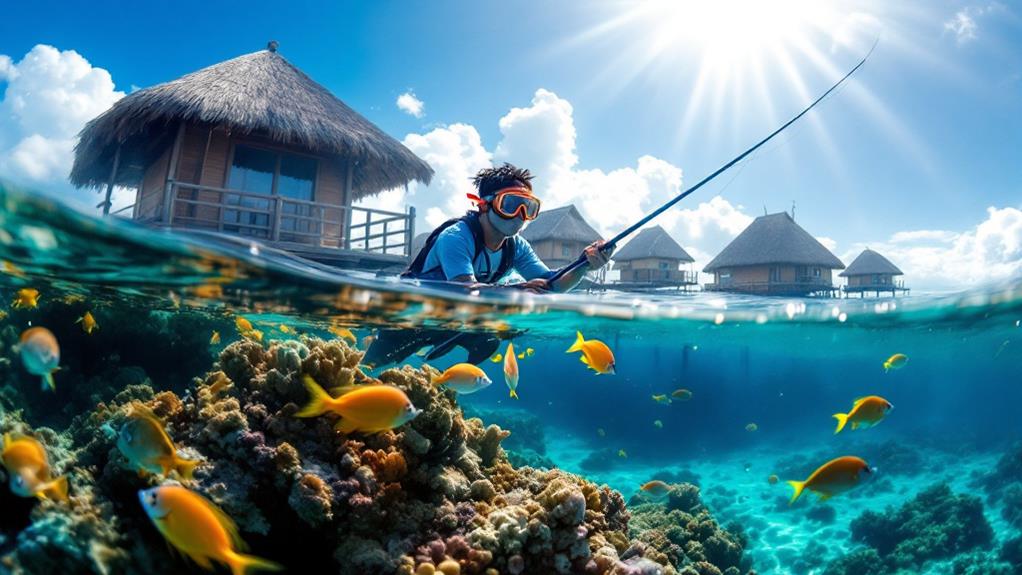
You'll plunge into a world of extraordinary adaptations and ancient traditions when exploring the lives of the Bajau Sea Gypsies. These nomadic people have evolved unique underwater abilities, including enlarged spleens and increased lung capacity, allowing them to descend up to 70 meters deep. They live on traditional wooden boats, following fish migrations and forming floating villages. The Bajau possess astounding fishing techniques, like fish calling and spearfishing at great depths. Their culture revolves around the ocean, with spiritual practices and sustainable fishing methods passed down through generations. Despite modern challenges, the Bajau continue to adapt while preserving their fascinating sea-based lifestyle. Delve deeper to uncover more about these extraordinary sea dwellers.
Underwater Adaptations
Plunge into the astonishing underwater adaptations of the Bajau people. You'll find that these sea nomads have developed extraordinary physical and genetic traits that allow them to thrive in their aquatic environment. Their most remarkable adaptation is their increased lung capacity, which enables them to immerse themselves to depths of up to 70 meters and remain underwater for extended periods.
The Bajau's enlarged spleens play a vital role in their diving abilities. This organ acts as a biological scuba tank, releasing oxygenated red blood cells during dives and allowing them to remain submerged for longer. Their unique metabolic adaptations help them conserve oxygen more efficiently than the average person.
You'd be amazed to learn that Bajau children often have burst eardrums from frequent submerging, leading to improved underwater vision. Their bodies have also adapted to regulate blood flow more effectively, redirecting it to essential organs during dives. These sea nomads even experience less nitrogen narcosis, a condition that typically affects divers at great depths. Through generations of living on the water, the Bajau have truly become human submarines, perfectly suited to their marine lifestyle.
Traditional Wooden Boats
The Bajau's incredible underwater abilities are matched only by their proficiency in crafting and steering traditional wooden boats. These vessels, known as lepa-lepa or pambut, are the lifeblood of their nomadic lifestyle. You'll find that these boats aren't just transportation; they're floating homes, workshops, and trading platforms.
The Bajau's boat construction techniques have been honed over generations. They use locally sourced materials, primarily hardwoods like teak or mahogany, which are prized for their durability and water resistance. The traditional boat design features a narrow hull with a shallow draft, perfect for maneuvering shallow coral reefs and coastal waters.
You'll notice that each boat is hand-crafted without nails, using wooden pegs and rattan lashings instead. This flexibility allows the boat to withstand rough seas and constant exposure to saltwater. The boats typically have a small cabin for shelter and storage, while the open deck serves as a living and working space.
The Bajau's intimate knowledge of boat-building and seafaring is passed down through oral tradition, ensuring that these skills remain an integral part of their culture.
Nomadic Lifestyle
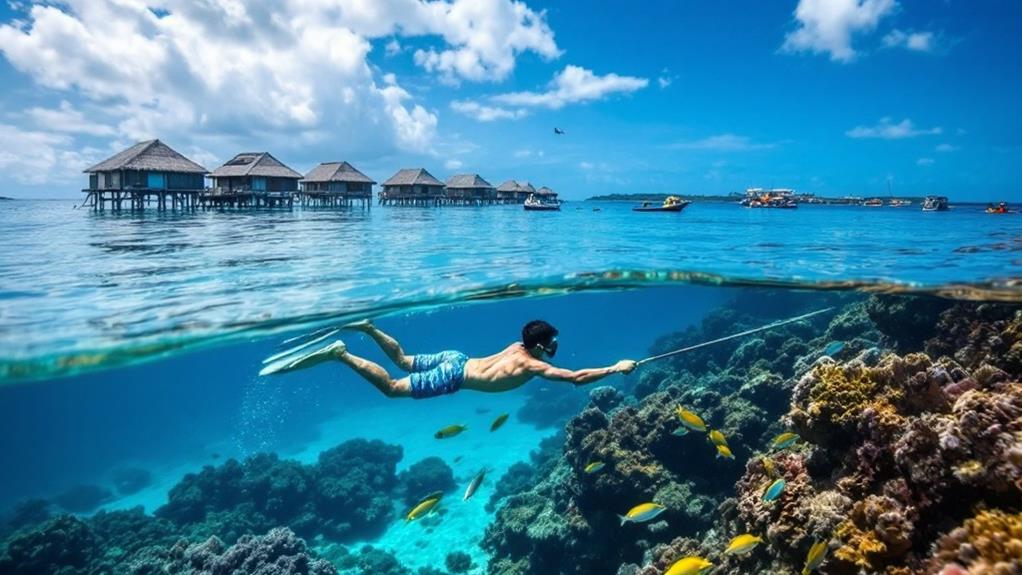
Freedom defines the Bajau's nomadic lifestyle, as they spend most of their lives at sea. You'll find these sea nomads constantly on the move, following fish migrations and seasonal patterns across vast stretches of ocean. Their extensive travel patterns take them through the waters of Indonesia, Malaysia, and the Philippines, rarely setting foot on land for extended periods.
As you observe their way of life, you'll notice the Bajau's unique communal living arrangements. Extended families often share a single boat, with larger groups forming floating villages of interconnected houseboats. This close-knit community structure enables them to pool resources, share responsibilities, and maintain their cultural traditions while adapting to life on the water.
You'll be amazed by their ability to read the sea, steer by the stars, and find suitable anchoring spots in shallow waters. The Bajau's nomadic lifestyle has honed their skills in diving, fishing, and boat craftsmanship, making them true experts of their marine environment. Their fluid existence, free from the constraints of land-based society, offers a fascinating glimpse into an alternative way of life that's deeply connected to the rhythms of the ocean.
Extraordinary Diving Skills
Plunge into the world of the Bajau's extraordinary underwater abilities, and you'll uncover skills that seem almost superhuman. These sea nomads have developed unparalleled submerging abilities that allow them to descend to depths of up to 70 meters without modern scuba gear. Their underwater lung capacity is incredible, with some Bajau divers able to hold their breath for up to 13 minutes.
You might wonder how they've achieved such incredible feats. The answer lies in both genetics and practice. Research has shown that the Bajau have larger spleens than the average person, which act as biological scuba tanks by releasing oxygenated blood during dives. Additionally, their eardrums have adapted to withstand the intense pressure underwater.
From a young age, Bajau children are taught to submerge, gradually increasing their time and depth. They've perfected techniques like equalizing ear pressure and slowing their heart rates to conserve oxygen. These skills allow them to hunt fish, collect pearls, and gather seafood with ease. The Bajau's extraordinary submerging abilities have not only shaped their way of life but have also fascinated scientists studying human adaptation to extreme environments.
Unique Fishing Techniques
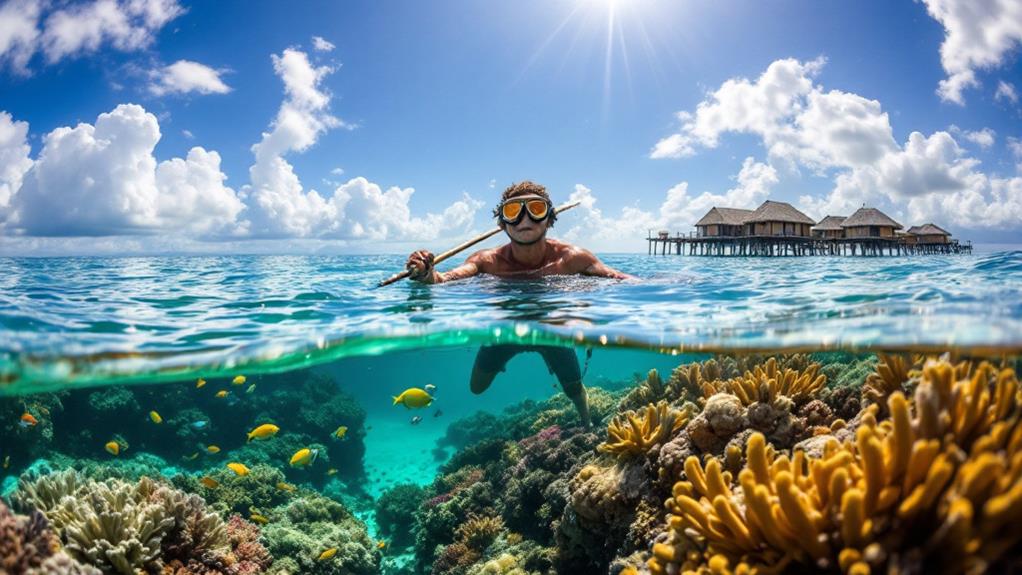
With their extraordinary submerging abilities as a foundation, the Bajau have developed a wide array of unique fishing techniques that set them apart from other maritime communities. You'll find their reliance on traditional skills blended with innovative fishing methods, creating a truly distinctive approach to harvesting the sea's bounty.
One of the most notable techniques you'll observe is spearfishing while free-submerging. The Bajau use hand-made wooden goggles and spears to catch fish at depths of up to 70 meters. They've also perfected the art of fish calling, using specific sounds to attract certain species.
You'll be amazed by their use of nets, which they deploy in various ways. They practice muro-ami, a technique involving a large net and a group of submergers who herd fish into the trap. Another method you'll see is blast fishing, where they use homemade explosives to stun fish, though this practice is controversial due to its environmental impact.
The Bajau's ingenuity extends to nighttime fishing, using kerosene lamps to attract fish and squid. You'll also witness their skill in hand-line fishing and the use of traditional fish traps made from natural materials.
Cultural Traditions and Beliefs
The Bajau's cultural traditions and beliefs are deeply intertwined with their seafaring lifestyle. You'll find that their spiritual practices often revolve around the ocean, with many rituals aimed at ensuring safe voyages and bountiful catches. Their animistic beliefs include a profound respect for sea spirits, which they believe can influence their daily lives and fishing fortunes.
Religious ceremonies play a significant role in Bajau communities, often incorporating elements of Islam, indigenous beliefs, and maritime traditions. You'll witness elaborate ceremonial traditions during important life events such as:
- Boat-blessing rituals before launching on long fishing expeditions
- Coming-of-age ceremonies where young Bajau learn to submerge and fish
- Wedding celebrations featuring vibrant water processions
- Funeral rites where the deceased are buried at sea
The Bajau's unique cultural practices extend to their music and dance, which often mimic the rhythms of the waves and the movements of sea creatures. Their oral traditions, passed down through generations, include stories of mythical sea beings and legendary fishing exploits. By immersing yourself in Bajau culture, you'll gain a deeper appreciation for their extraordinary connection to the marine world.
Sustainable Ocean Practices
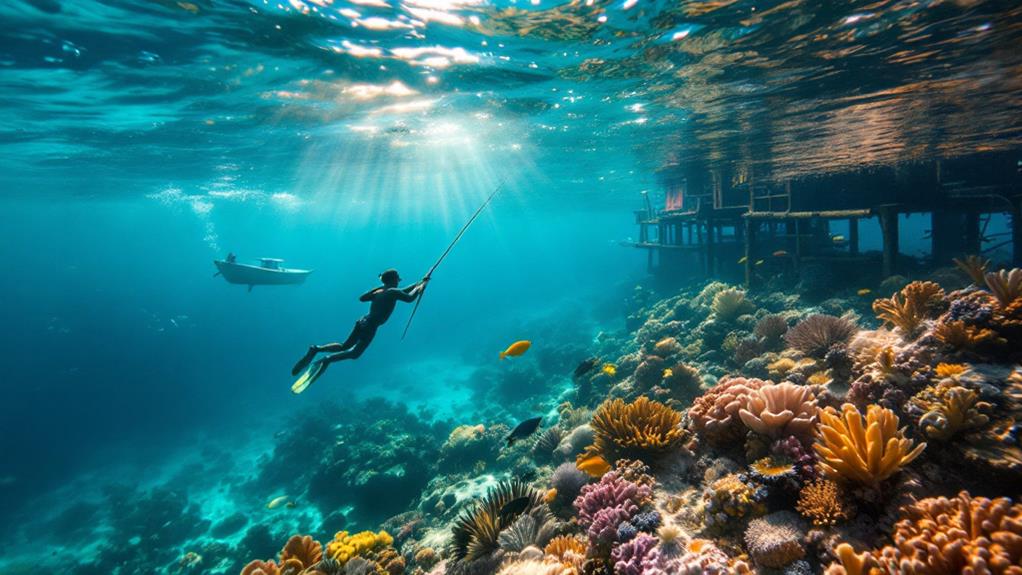
How do the Bajau maintain their ocean-based lifestyle without depleting marine resources? The answer lies in their centuries-old sustainable practices and deep connection to the sea. You'll find that these sea nomads have developed an exceptional understanding of marine ecosystems, allowing them to coexist harmoniously with their aquatic environment.
One of the Bajau's key sustainable practices is seaweed farming. They've honed this eco-friendly form of aquaculture, cultivating seaweed for food and commercial purposes without harming the ocean. This practice not only provides a sustainable income but also helps maintain the health of surrounding waters.
The Bajau are also actively involved in coral reef preservation. They've learned to fish selectively, avoiding overfishing and protecting endangered species. You'll notice they use traditional fishing methods that minimize damage to coral reefs, such as hand-line fishing and spearfishing. They've even developed a rotational fishing system, allowing areas to recover before returning to them.
Their intimate knowledge of tides, currents, and marine life cycles enables them to make informed decisions about when and where to fish, ensuring the long-term sustainability of their ocean home.
Threats to Bajau Way
Dark clouds loom over the Bajau's traditional way of life. As the modern world encroaches on their aquatic domain, these sea nomads face unparalleled challenges. Resource depletion threatens their sustenance, with overfishing and habitat destruction pushing marine life to the brink. You'll witness the struggle as they compete with commercial fishing operations, their once-bountiful waters now yielding fewer catches.
Cultural erosion is another formidable foe. As younger generations are lured by the promise of mainland opportunities, traditional knowledge and practices risk being lost forever. You'll see the impact of government policies pushing for permanent settlements, disrupting the Bajau's nomadic lifestyle.
To truly grasp the threats, imagine:
- Empty nets pulled from overfished waters
- Concrete houses replacing stilted bamboo homes
- Plastic waste choking once-pristine coral reefs
- Bajau children in mainland schools, disconnected from their maritime heritage
These challenges are reshaping the Bajau's world. As they traverse these turbulent waters, the sea gypsies must adapt or risk losing their unique identity. You're witnessing a critical juncture in their history, where ancient traditions clash with modern realities.
Modern Challenges and Adaptations
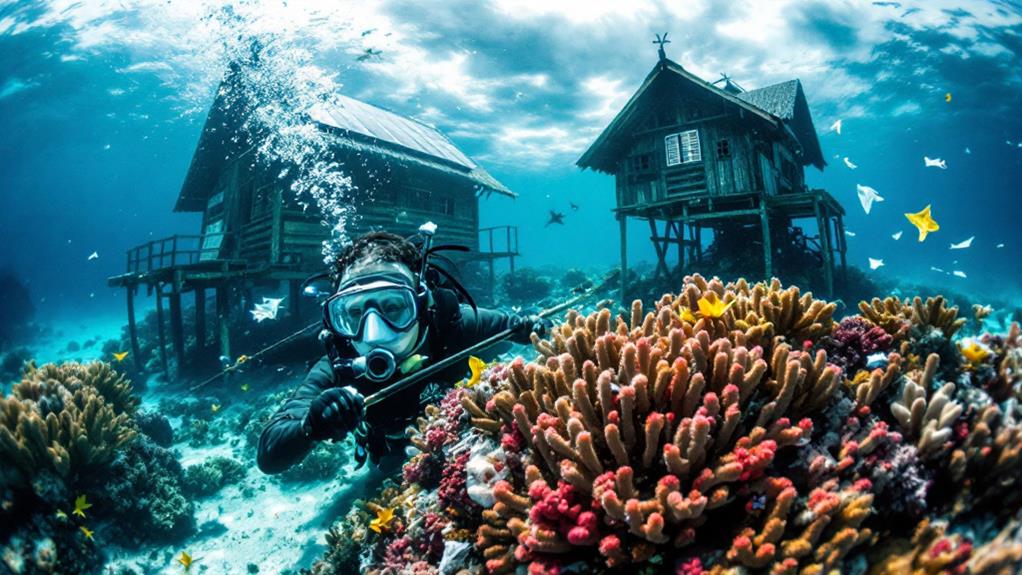
Facing these existential threats, the Bajau are adapting to survive in a rapidly changing world. You'll find that many Sea Gypsies are now embracing education as a means of social change. They're sending their children to schools on land, recognizing the importance of literacy and formal learning in today's global economy.
Economic development has also reached the Bajau communities. Some have started small businesses, selling traditional crafts or offering eco-tourism experiences to visitors fascinated by their unique way of life. You'll see others working in coastal towns, taking jobs in construction, fishing industries, or hospitality.
Technology is playing a role in their adaptation too. Smartphones and social media are connecting isolated Bajau communities, allowing them to share information and preserve their culture digitally. Some are using these platforms to raise awareness about their struggles and advocate for their rights.
Despite these changes, many Bajau endeavor to maintain their traditional practices. They're finding ways to balance their seafaring heritage with modern necessities, ensuring their culture survives while adapting to a world that's rapidly encroaching on their oceanic domain.



